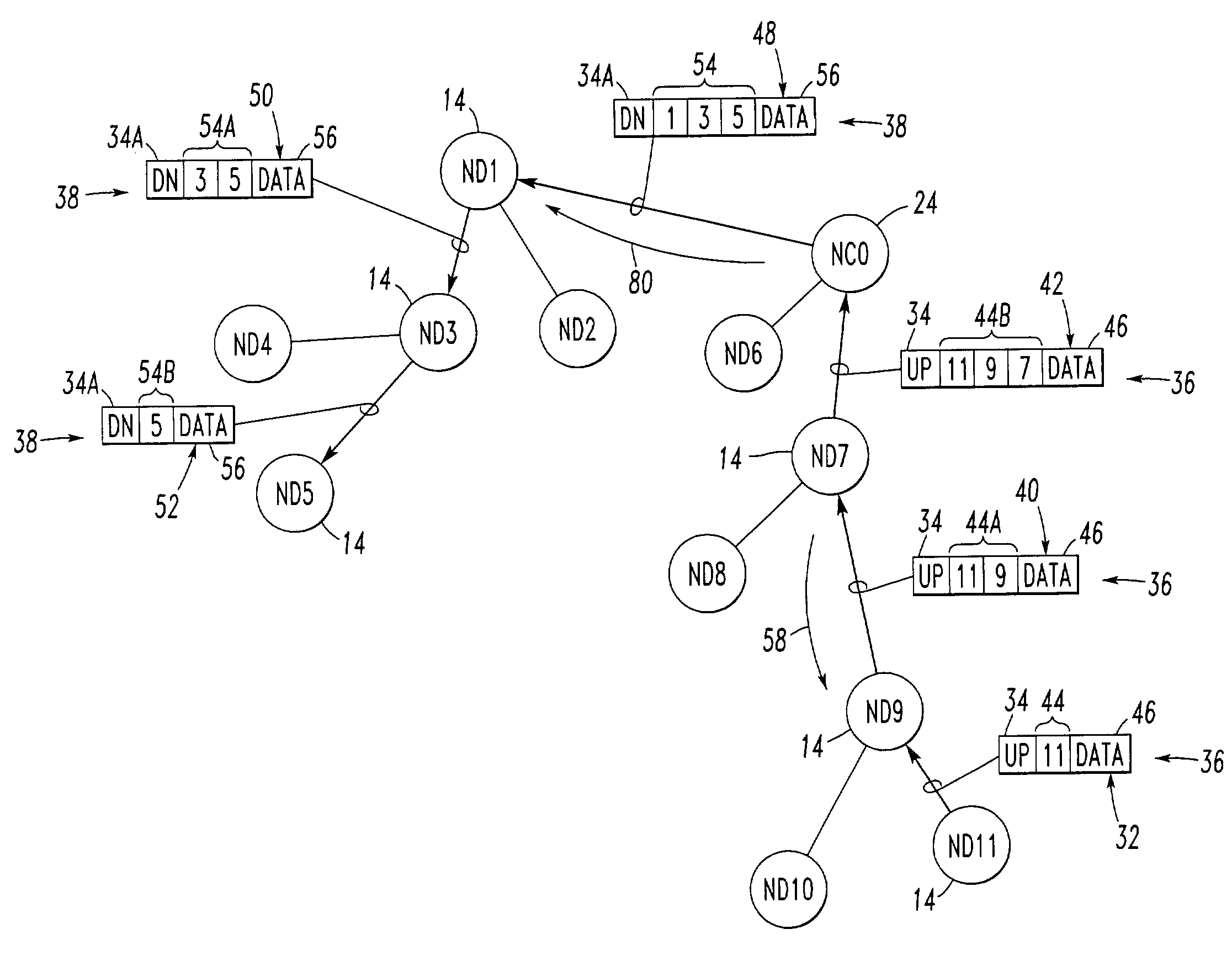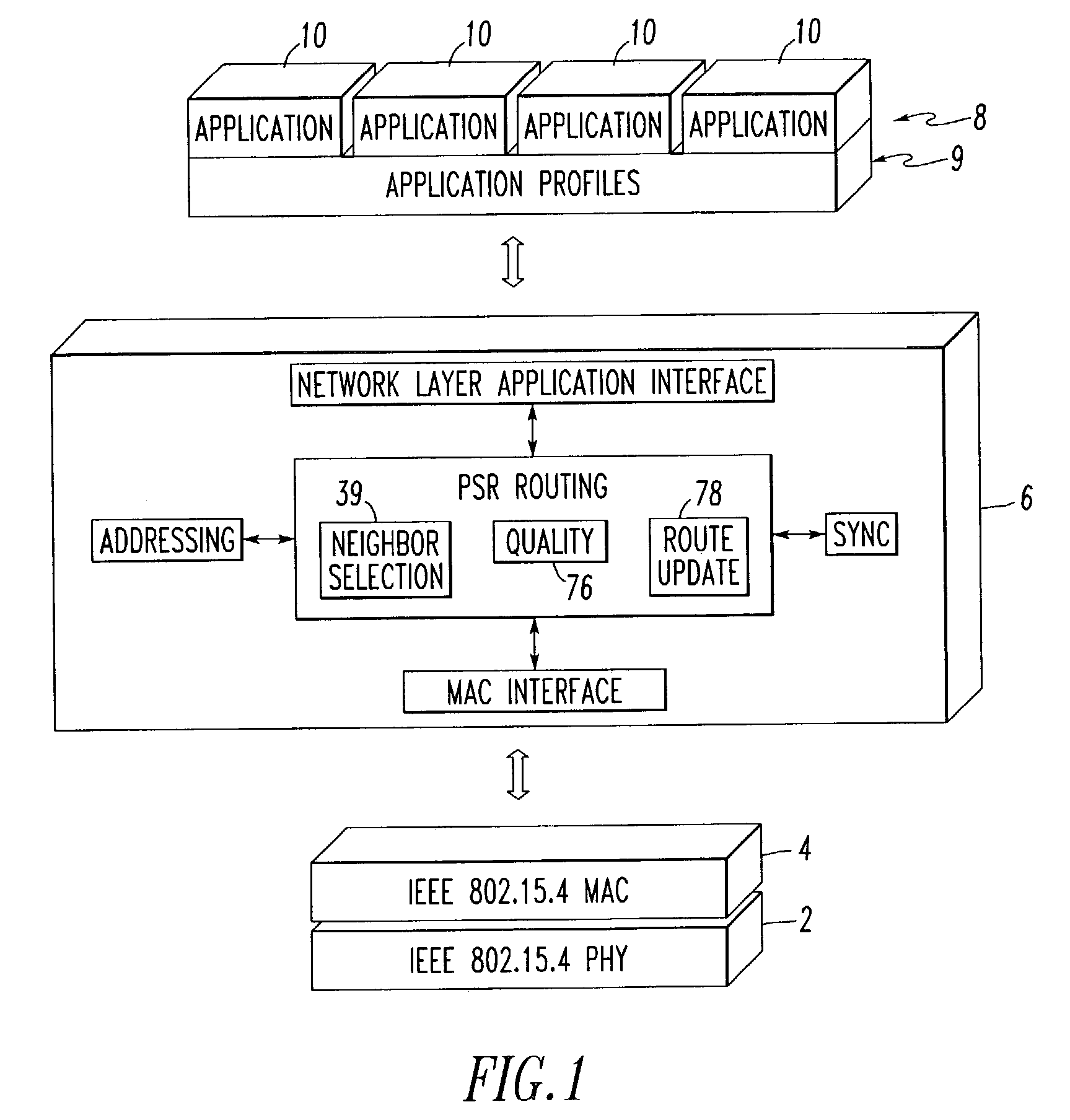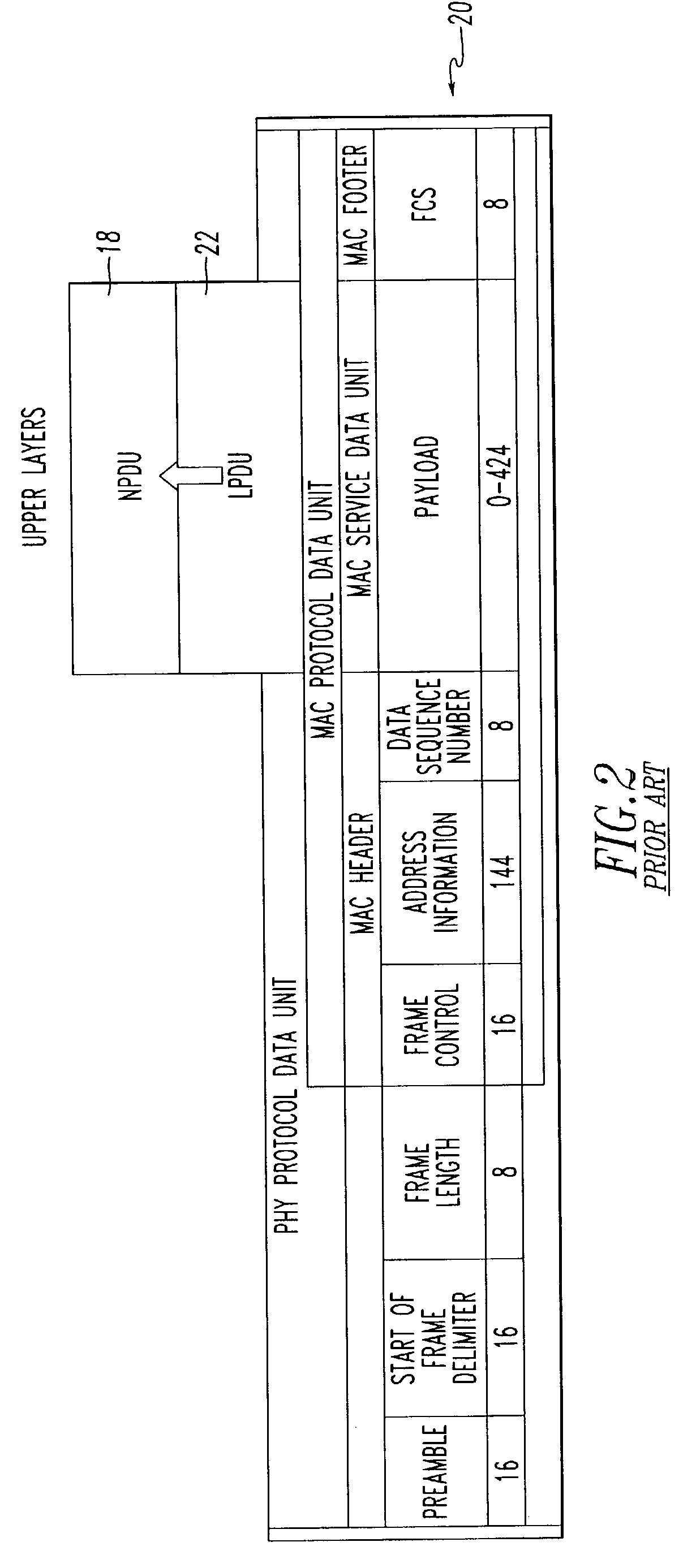Ad-hoc network and method of routing communications in a communication network
- Summary
- Abstract
- Description
- Claims
- Application Information
AI Technical Summary
Benefits of technology
Problems solved by technology
Method used
Image
Examples
example 1
[0177]The industrial market is a natural place for sensor networks. Using a combination of sensors and LR-WPAN devices, data is gathered, processed and analyzed to determine whether or when user interaction is required. Examples of wireless sensor applications include detecting emergency situations, such as hazardous chemical levels and fires, and monitoring and maintenance of rotating machinery. An LR-WPAN significantly reduces the installation cost of new sensor networks and simplifies expansion of existing network installations. Applications include monitoring applications with noncritical data where longer latencies are acceptable. Such industrial monitoring applications, in general, do not need high data throughput or constant updating. Instead, emphasis is placed on low power consumption in order to maximize the lifetime of the battery-powered devices that make up the network.
example 2
[0178]Wireless communication may also be applied to vehicles, such as cars, as driver comfort and the number of features increase. In a similar manner, the number of wires required in a car has grown significantly, having a great impact on installation cost. In contrast to the home or office environment, the automotive environment represents a relatively underdeveloped application field regarding the provision of new services or updating existing services. One of the key factors missing for accomplishing this task is an appropriate wireless delivery medium based on standard specifications. The wireless option introduces flexibility in installation and an advanced alternative to wired connections. A special challenge for automotive applications is meeting the harsh automotive environment with a solution low enough in cost to find volume applications. Some of the applications WPANs can address in a vehicle are control and monitoring of noncritical sensors.
example 3
[0179]One vehicle application example is a tire pressure monitoring system. The system consists of four pressure sensors (i.e., NDs), one mounted on each tire, and a central control unit or station (i.e., NC) to receive the collected data. Since the pressure sensors have to be mounted on the tires, this application does not permit the use of any communication wires or power cables. Therefore, sensors have to be battery-powered. Since it is impractical to replace the sensors or their batteries between tire changes, it is required that the sensor batteries last at least three, preferably up to five, years. This puts significant constraints on the power consumption of the electronic components and requires power management capabilities. The data that needs to be communicated is, in most cases, only a few bits in size and indicates the measured tire pressure. This information is transmitted about every 1 to 10 minutes under non-alarm conditions. Unless there is a fast loss of pressure, ...
PUM
 Login to View More
Login to View More Abstract
Description
Claims
Application Information
 Login to View More
Login to View More - R&D
- Intellectual Property
- Life Sciences
- Materials
- Tech Scout
- Unparalleled Data Quality
- Higher Quality Content
- 60% Fewer Hallucinations
Browse by: Latest US Patents, China's latest patents, Technical Efficacy Thesaurus, Application Domain, Technology Topic, Popular Technical Reports.
© 2025 PatSnap. All rights reserved.Legal|Privacy policy|Modern Slavery Act Transparency Statement|Sitemap|About US| Contact US: help@patsnap.com



